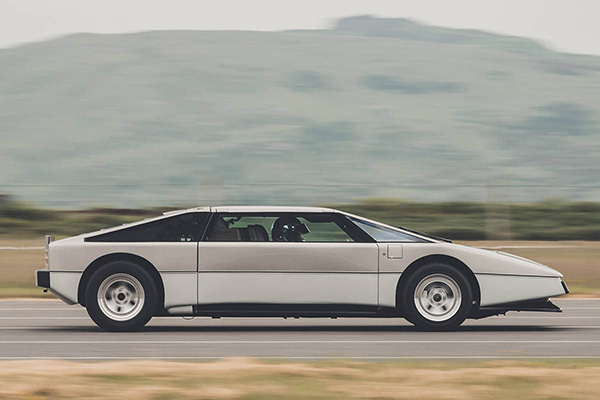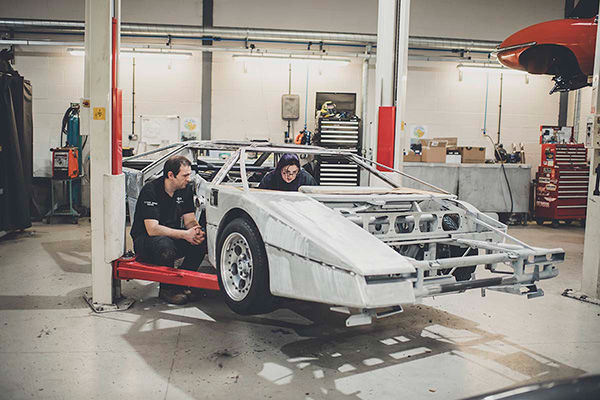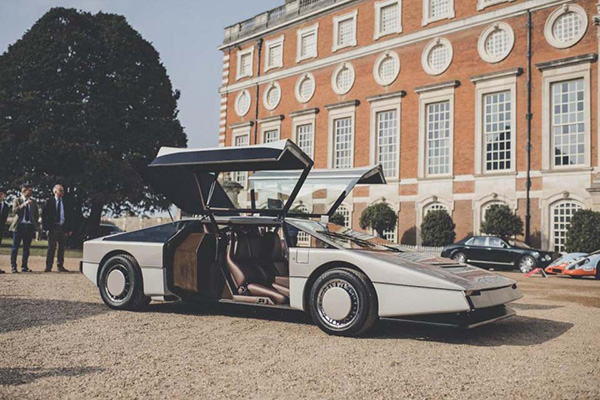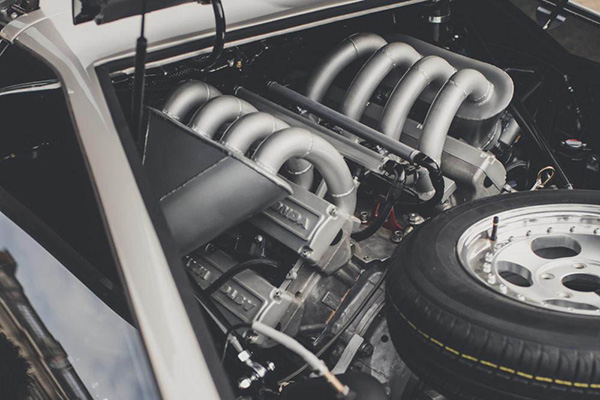The Tale of the Aston Martin Bulldog
Aston Martin has often been seen as the plucky British underdog, and never more so than when it showed off its sensational Bulldog concept in 1979. Everything looked right about this car and it should have been set to carry the company into the 1980s on a wave of mid-engined supercar brilliance.
Yet, fate had other plans and incoming chairman Victor Gauntlett parked the project due to its huge cost to focus on selling Aston Martin’s existing, and slightly less expensive, range of cars. This was despite the fact there was a decent bank of orders for the car from very well-heeled customers.

Ahead of its time
However, the myth of the Bulldog refused to lie down in its kennel, not least because the car’s full potential was never realised. When Aston announced the car, it boldly claimed the Bulldog would be the fastest production car in the world. It didn’t matter that production meant building a maximum of 25 examples, Aston had this title in its sights and it would have bestowed a good deal of kudos on the tiny company next to rivals such as Ferrari, Lamborghini, and Maserati.
This lofty ambition was within reach if Aston had put the Bulldog into even limited production as the car did achieve a top speed of 191mph when tested at MIRA in the UK in 1980. By then, the writing was on the wall for this car’s future as a one-off, but it did prove that Aston Martin’s engineers and designers were not barking up the wrong tree.

Typically big Aston power
The design of the Bulldog started back in the mid-1970s with a low-slung, mid-engined design sketched out. A substantial spaceframe chassis provided the basis for the car and the engine was always going to be Aston’s own V8 engine as used in its existing road cars. However, to make 200mph possible it needed a good deal more power, and turbocharging was the chosen means to get there. With twin Garret turbos used, along with Bosch fuel injection, the power was quoted from the factory at 650bhp, but those inside the project knew the Bulldog was putting out more than 700bhp.
To deal with this vast amount of power, a ZF five-speed manual transmission was bolted to the back of the V8. This gearbox had already been proven in the likes of the De Tomaso Pantera, so it was a good bet for the Bulldog. Elsewhere on the chassis, double wishbone suspension was fitted to each corner at the front, but the rear stuck with Aston Martin’s De Dion set-up as it was more compact within the Bulldog’s already cramped engine bay. Slowing this lot down was a set of disc brakes that would not have looked out of place on a Le Mans race car.

All about the wedge
To clothe the mid-engined supercar, Aston Martin’s then boss Alan Curtis brought in William Towns, who was one of the leading protagonists of the wedge school of design. Towns’ uncompromising shape would clearly offer a low frontal area to help touch 200mph. In the end, the car was just 43-inches tall, but more than 60-inches wide and a considerable 15ft 6in long. Towns also went for full dramatic effect with gullwing doors. This might have seemed like a stylist’s fancy, but it did also mean the side sills were low and cut into the body to make getting in and out much easier.
As for the name of the car, Alan Curtis was a keen private pilot and regularly flew a Scottish Aviation Bulldog, so he adopted the name for his supercar. The fact it echoed with the British Bulldog pluck of the whole affair was a happy coincidence.

Pitching for the magic Double-Ton
After the Bulldog reached 191mph in 1980, it was sold in 1984 by the factory to a private collector. The car then passed through other owners before it was discovered in storage in the Middle East. A US collector bought the car and enlisted the help of Richard Gauntlett – son of Victor Gauntlett, who had been chairman of Aston Martin when the Bulldog idea was shelved. Richard then took the car to renowned UK restoration firm Classic Motor Cars in Bridgnorth, Shropshire, to be fully restored and made ready to fulfil its destiny as a 200mph car.
It might have missed the chance to be the first production car to reach the double-ton, but Classic Motor Cars was determined it wouldn’t miss again. Fastidious research ensured the Bulldog was restored to how it was when it was shown off and driven in period. It was always a fully working car and had been tested extensively at the Millbrook Proving Ground, which is just down the road from where Aston Martin was based in Newport Pagnell.

Mission accomplished
Only small updates were made to make the Bulldog safe for its renewed purpose and in late 2021 it was back out to be driven at serious speed for the first time in 40 years. On this occasion, the car reached 162mph in a shakedown run at the Yeovilton Royal Navy Air Station base. Shortly after this, it was picking up awards for best restoration of the year. Then, in 2023 after more than 6,000 hours of work to bring the Bulldog back to life, it did what it set out to do originally. Driven by Aston Martin works race driver Darren Turner, the low-flying Bulldog headed on to the tarmac at Machrihanish airfield, a former NATO base in Campbeltown, Scotland. Using all the runway, Turner didn’t just see 200mph, he took the Bulldog to an amazing 205.4mph.
Finally, it was job done for this one-off Aston Martin and showed the ideas and work of the original team behind the car had been spot on. With little more development and time, the Bulldog could have been the first 200mph supercar as much as seven years before the Ferrari F40 claimed that crown. While the Aston Martin remained an underdog in this respect, the work to restore the Bulldog and prove its potential show it is far more than a shaggy dog story.
What are your thoughts on the Aston Martin Bulldog? Let us know in the comments below!

COMMENT